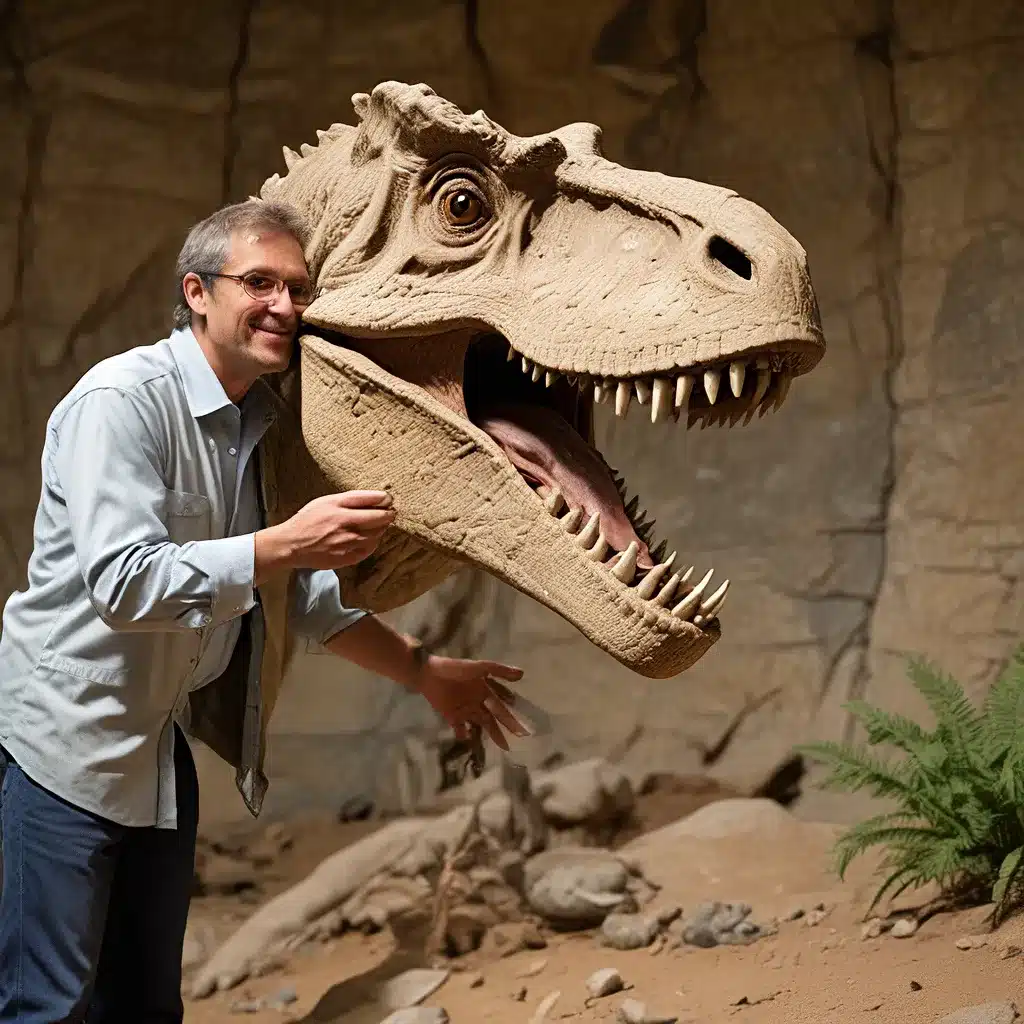
Uncovering the Prehistoric Past: A Legacy of Exploration and Discovery
In the annals of scientific exploration, the field of paleontology has captivated the imaginations of countless individuals, from seasoned scholars to curious schoolchildren. At the forefront of this captivating discipline are the archaeological pioneers who have dedicated their lives to unearthing the secrets of the prehistoric world, shedding light on the ancient creatures that once roamed the Earth.
One such institution that has played a pivotal role in this endeavor is the Field Museum in Chicago, Illinois. Established in the wake of the 1893 World’s Columbian Exposition, the museum has been a bastion of paleontological research and discovery for over a century, amassing an extraordinary collection of fossils and artifacts that have revolutionized our understanding of the past.
The Field Museum’s history is intertwined with the evolution of paleontology itself, as the museum’s early curators and researchers embarked on ambitious expeditions to uncover the remains of long-extinct creatures. One such pioneer was Elmer Riggs, the museum’s first vertebrate paleontologist, who led numerous expeditions to the American West in search of fossils from the Jurassic and Cretaceous periods. Riggs’s most notable discovery was the Brachiosaurus, a towering sauropod dinosaur whose cast now stands proudly outside the museum, a testament to the enduring legacy of these remarkable creatures.
Pioneering Expeditions and Groundbreaking Discoveries
The Field Museum’s commitment to paleontological research extended far beyond the borders of the United States, with expeditions to remote corners of the globe. In 1896, the museum’s first zoology curator, Daniel Giraud Elliot, and its chief taxidermist, Carl Akeley, embarked on a pioneering expedition to Somalia, bringing back the first of the museum’s extensive African bird and mammal collections.
Akeley, in particular, would become a legend in the field of paleontology and taxidermy, known for his meticulous work in creating the museum’s iconic dioramas and habitat groups. His Four Seasons exhibit, depicting the life cycle of the white-tailed deer, set the standard for museum displays and inspired generations of scientists and visitors alike.
The museum’s paleontological pursuits continued unabated through the 20th century, with a succession of renowned curators and researchers making significant contributions to the field. Karl P. Schmidt, a herpetologist, Emmet Blake and Austin Rand, ornithologists, Dwight Davis, a mammalogist, and Philip Hershkovitz, a primate expert, all left their indelible mark on the museum’s collections and research.
The Unveiling of SUE: A Tyrannical Triumph
Perhaps the most iconic paleontological discovery in the Field Museum’s history was the unearthing of the largest and most complete Tyrannosaurus rex skeleton ever discovered. Nicknamed “SUE,” the magnificent fossil was discovered in 1990 in South Dakota by Sue Hendrickson, and the museum’s subsequent acquisition and preparation of the specimen captivated the public’s imagination.
Unveiled to the public in 2000, SUE’s arrival at the Field Museum was a testament to the museum’s commitment to showcasing the wonders of the prehistoric world. The painstaking process of preparing the skeleton, which involved over 30,000 hours of work, highlighted the meticulous attention to detail that characterizes the museum’s approach to paleontological research.
Today, SUE stands as a centerpiece of the museum’s Evolving Planet exhibition, captivating visitors with its sheer size and power. The T. rex’s story, however, is just one of the many remarkable tales that the Field Museum has to tell, a testament to the enduring legacy of the institution’s pioneering paleontologists and their relentless pursuit of prehistoric knowledge.
The Field Museum’s Ongoing Contributions to Paleontology
The Field Museum’s impact on the field of paleontology extends far beyond its impressive collection of fossils and artifacts. The museum’s researchers and scientists continue to push the boundaries of our understanding of the prehistoric world, conducting cutting-edge research and expeditions that have led to the discovery of new species and the rewriting of long-held theories.
One such example is the museum’s work in conservation ecology, which has led to the protection of over 33 million acres of forests and waterways. The museum’s rapid biological inventories, conducted in partnership with local communities, have helped to safeguard the biodiversity of the Andes and the Amazon, ensuring that these vital ecosystems and the species they harbor will be preserved for future generations.
The Lost Kingdoms, a website dedicated to exploring the mysteries of ancient civilizations and their cultural significance, has also highlighted the Field Museum’s contributions to the field of archaeology. The museum’s extensive collections, spanning a diverse range of cultures and time periods, have provided invaluable insights into the lives and practices of our ancestors, shedding light on the rich tapestry of human history.
Honoring the Pioneers of Paleontology
As we reflect on the remarkable achievements of the Field Museum’s paleontological pioneers, we are reminded of the crucial role that these dedicated individuals have played in unlocking the secrets of the prehistoric world. From the tireless expeditions of Elmer Riggs to the groundbreaking discoveries of SUE the T. rex, the museum’s legacy is one of unwavering commitment to the pursuit of knowledge and the preservation of our shared heritage.
Through their remarkable contributions, these paleontological pioneers have not only expanded our understanding of the past but have also inspired a new generation of scholars, scientists, and enthusiasts to continue the exploration of the prehistoric realm. Their legacy serves as a testament to the power of human curiosity and the transformative impact that can be achieved through the relentless pursuit of knowledge.
As we continue to uncover the mysteries of the distant past, let us honor the work of these remarkable individuals and the institutions, like the Field Museum, that have championed their cause. For in doing so, we not only pay tribute to the pioneers of paleontology but also ensure that the rich tapestry of our prehistoric past remains vibrant and accessible to all who seek to explore the wonders of the natural world.


